From Welshpool to Mametz Wood: Fred Rowlands' story
- Published
As Wales prepares to remember the battle of Mametz Wood, BBC Wales's Roger Pinney considers the story of one soldier killed on the first day.

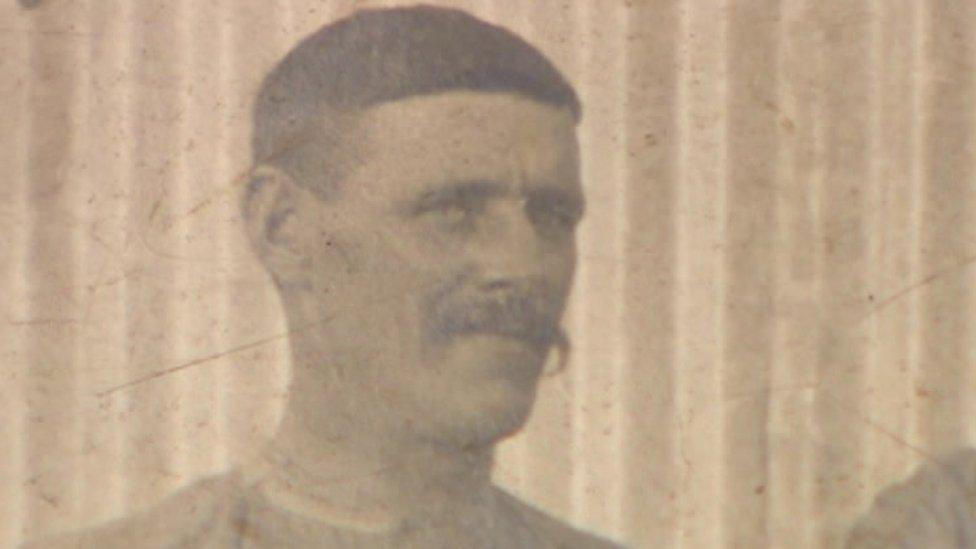
Fred Rowlands
His name was Fred. But it could have been Tom, Dick, Harri or Dai. Fred Rowlands' story has so much in common with so many other stories of men from all corners of Wales.
He was born in Welshpool, but moved to the south Wales valleys when coal was king and jobs plentiful.
By the time war broke out in 1914, Fred Rowlands was a timberman working underground at the International Colliery in Blaengarw.
Within a month he had signed up.
It is not known why. Patriotism perhaps, coupled with the excitement of the time?
Fred was one of the thousands of miners, ironworkers, farmhands and shopboys who flocked to the colours.
He was one of the thousands who never came home.
"I don't like to think about it," says Louvain Rees, Fred Rowlands' great-great-grand-daughter.
"His daughter wouldn't have even been one year old when he went. It would have been the last time he saw her."

Louvain Rees researched Fred Rowlands' life after stumbling across the story when her own mother started compiling a family tree.
We met outside the home in Pontycymmer near Bridgend which Fred left to go to war.
"It is sad to think that my great-great-grandmother would have been on her own there with her daughter waiting to hear from her husband that never came back," she said.
Fred Rowlands enlisted at Porthcawl in the Cardiff City Battalion of the Welch Regiment.
Initial training was done at Colwyn Bay. In April 1915 the battalion was combined into the new 38th (Welsh) Division, created by David Lloyd George, then the Minister of Munitions, as a force made up of regiments and battalions from across Wales.
By December 1915 they had landed in France to reinforce an army which had already lost more than 180,000 men and had many times that wounded.
In June 1916 the division, including the newly promoted Sergeant Fred Rowlands, was in a place most of the men had probably never heard of.
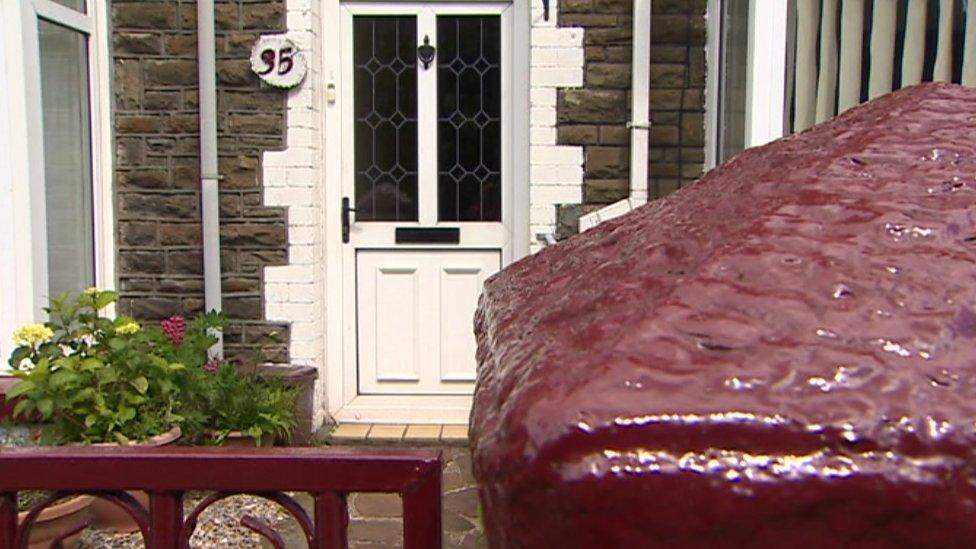
Fred Rowlands' Pontycymmer home
It was pretty place of rolling chalk down land, with a meandering shallow river running through it.
The river is called the Somme.
Within a month this place had become the bloodiest of battlefields.
"From the war diary the extracts that we have it was an awful day. It was raining," says Ms Rees.
The day she is talking about was July 7th 1916. The Battle of the Somme was a week old, and it was the day the 38th (Welsh) Division was ordered into battle.
Their orders were to take an objective called Mametz Wood.
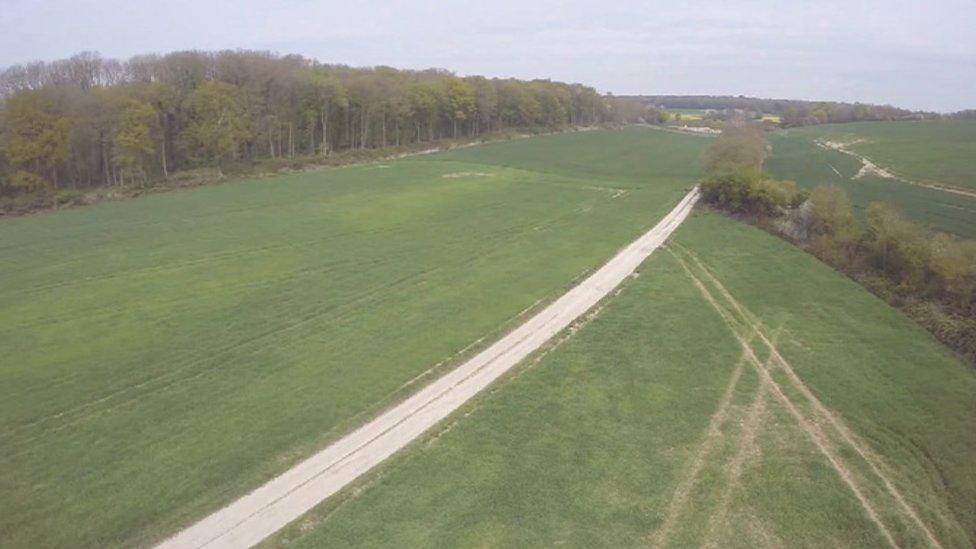
Mametz Wood now
Fred Rowlands' battalion - the City of Cardiff, along with the 1st Gwent Battalion from the South Wales Borderers, was to lead the attack. They were caught in murderous cross-fire.
An officer with the Royal Welch Fusiliers, Captain Wyn Griffiths, described what he saw: "Along the bare ridge rising up to Mametz Wood our men were burrowing into the ground with their entrenching tools, seeking whatever cover they might make. A few shells were falling, surprisingly few.
"Wounded men were crawling back from the ridge, men were crawling forward with ammunition. No attack could succeed over ground such as this, swept from front and side by machine guns at short range."
And in the middle of it all, the platoon led by Sergeant Fred Rowlands. "He would have been leading the men over. Possibly to their death. Which is not a nice thing to think about," Ms Rees says.
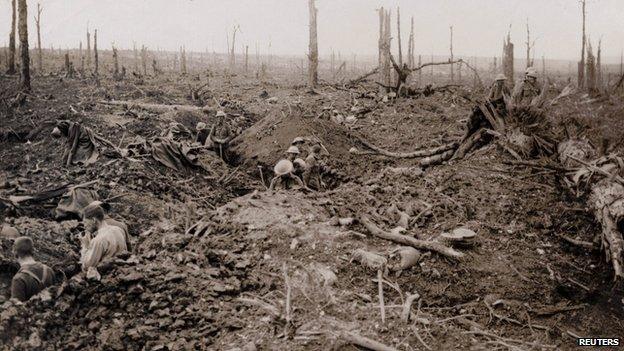
About 4,000 men from the 38th (Welsh) Division were killed or injured at Mametz Wood in 1916
Three times that day they attacked. Three times they were repelled. Among the dead, Sergeant Fred Rowlands, the miner from Pontycymmer.
"So many people died in it. And it wasn't just him. Hundreds of families were torn apart by that one day. My great-grandmother was left with a two-year-old child on her own. That's her whole family was torn apart," says Fred Rowlands' great-great grand-daughter.
On that one day the City of Cardiff Battalion was to suffer more than four hundred casualties.
The 38th (Welsh) Division was ordered to attack again the next day and the next. It took five days to capture most of Mametz Wood. Five days which cost around 4,000 killed, missing and wounded. Cities, towns and villages throughout Wales were cast into mourning.
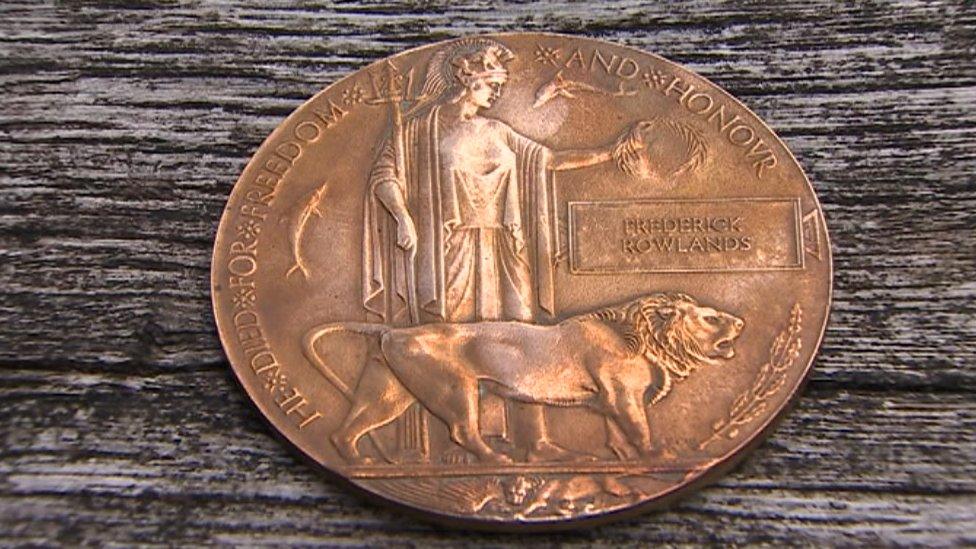
Plaque presented to Fred Rowlands' family after his death in battle
Louvain Rees has few mementos of her ancestor.
A faded group photograph which shows a big man with a moustache. His "dead man's penny", a plaque presented by the government to the families of all those who died in the First World War.
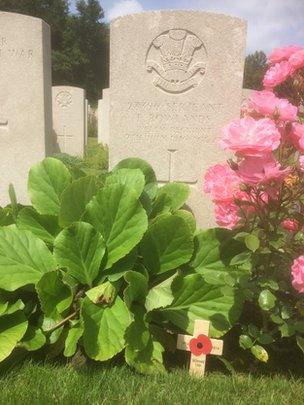
Fred Rowlands' grave at Flat Iron Copse War Cemetery
"My grandmother never talked about him because they didn't know him," she says.
"What we know about him is what his widow has told my grandmother. All things like he was a good singer. He was in the colliery choir. And he liked to play pranks. He was mischievous."
"My grandmother remembers that when she was young she used to sneak into this drawer and there were all letters from France in embroidered envelopes and she used to read them, but everything was sold."
Fred Rowlands is buried yards from where he fell in the Flat Iron Copse War Cemetery at the edge of Mametz Wood.
On a ridge close by is the Welsh Memorial. A dragon looks out across a valley where there was so much Welsh sacrifice.
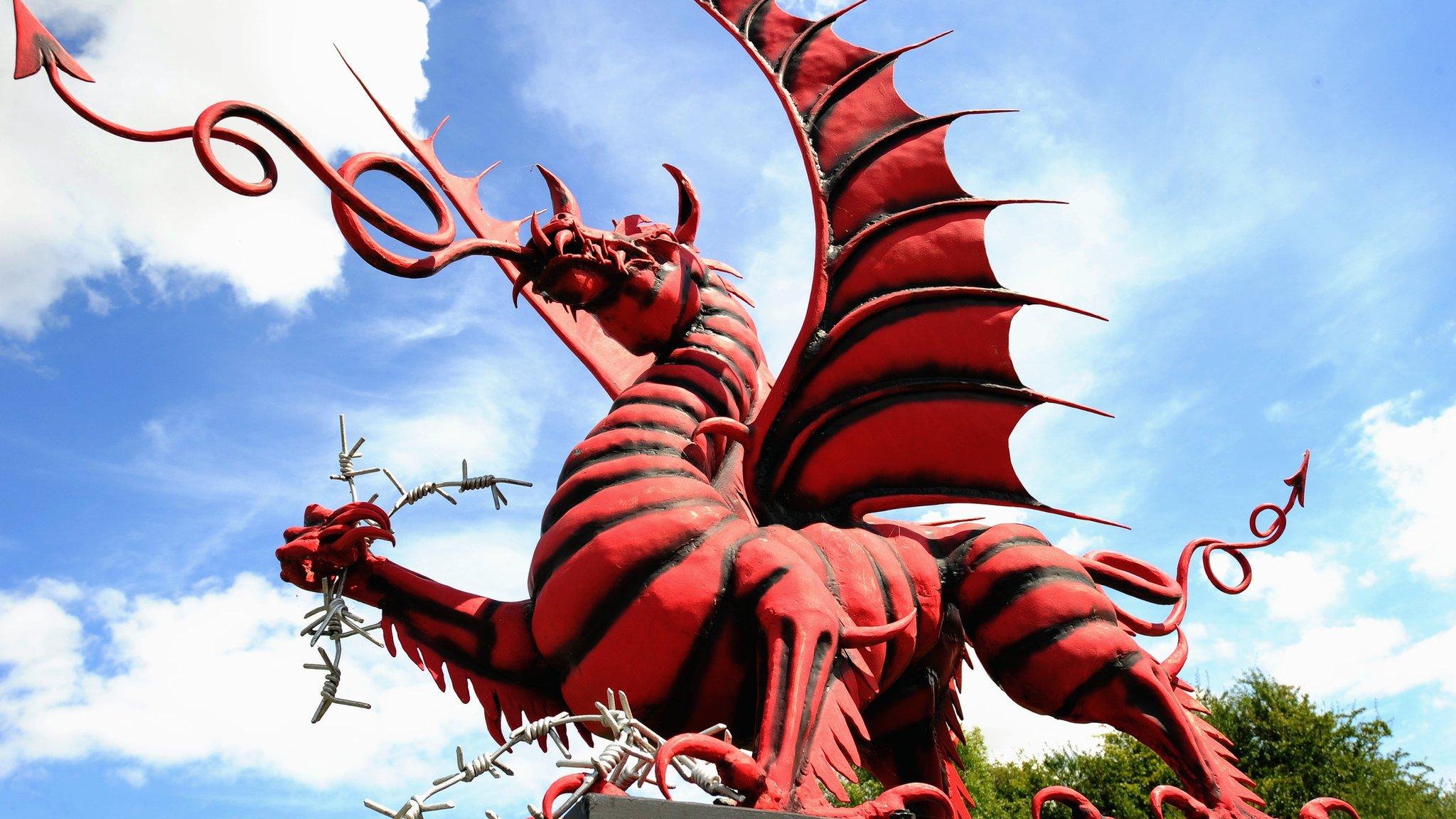
The Welsh memorial at Mametz Wood which was funded by public contributions